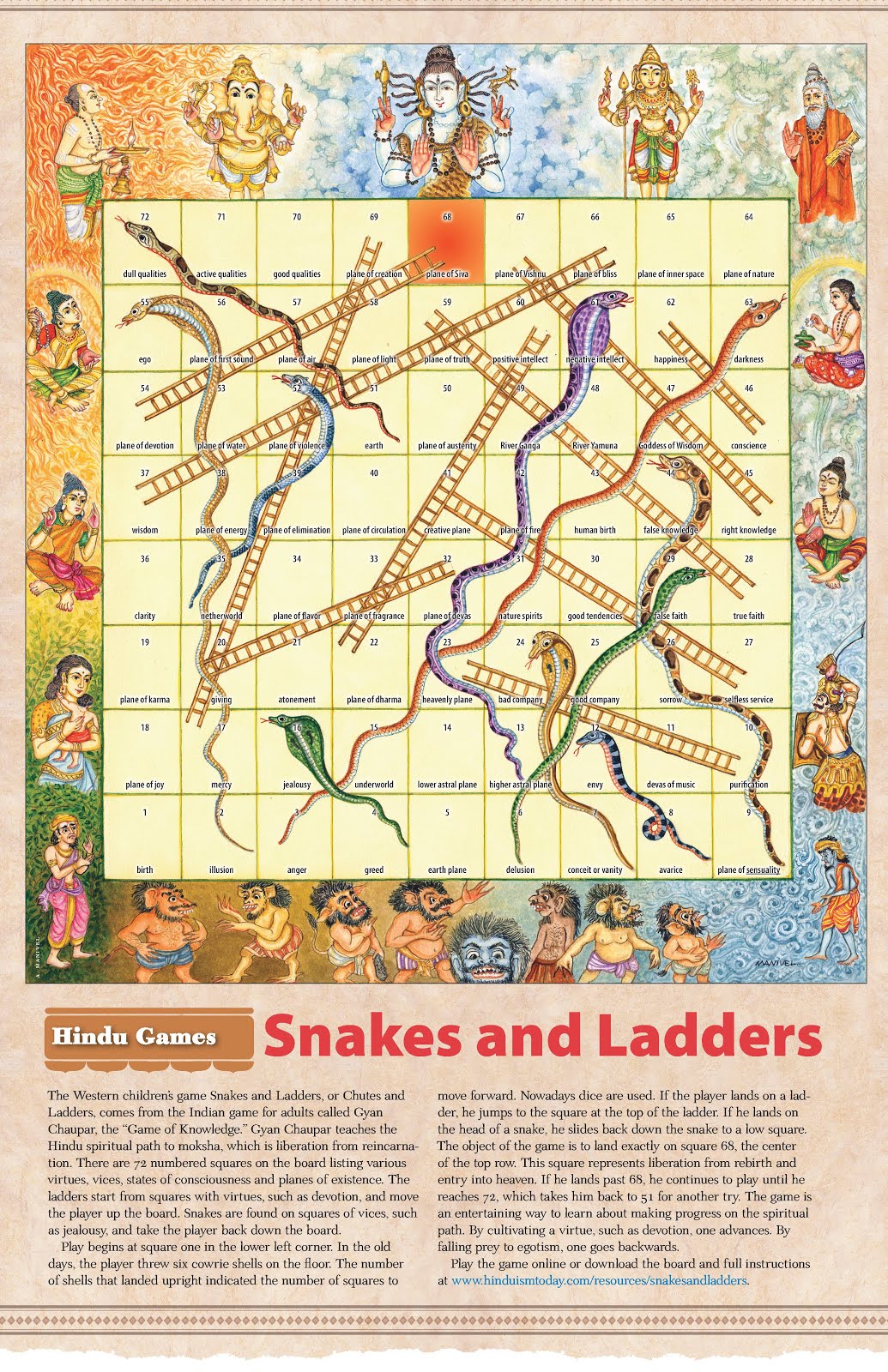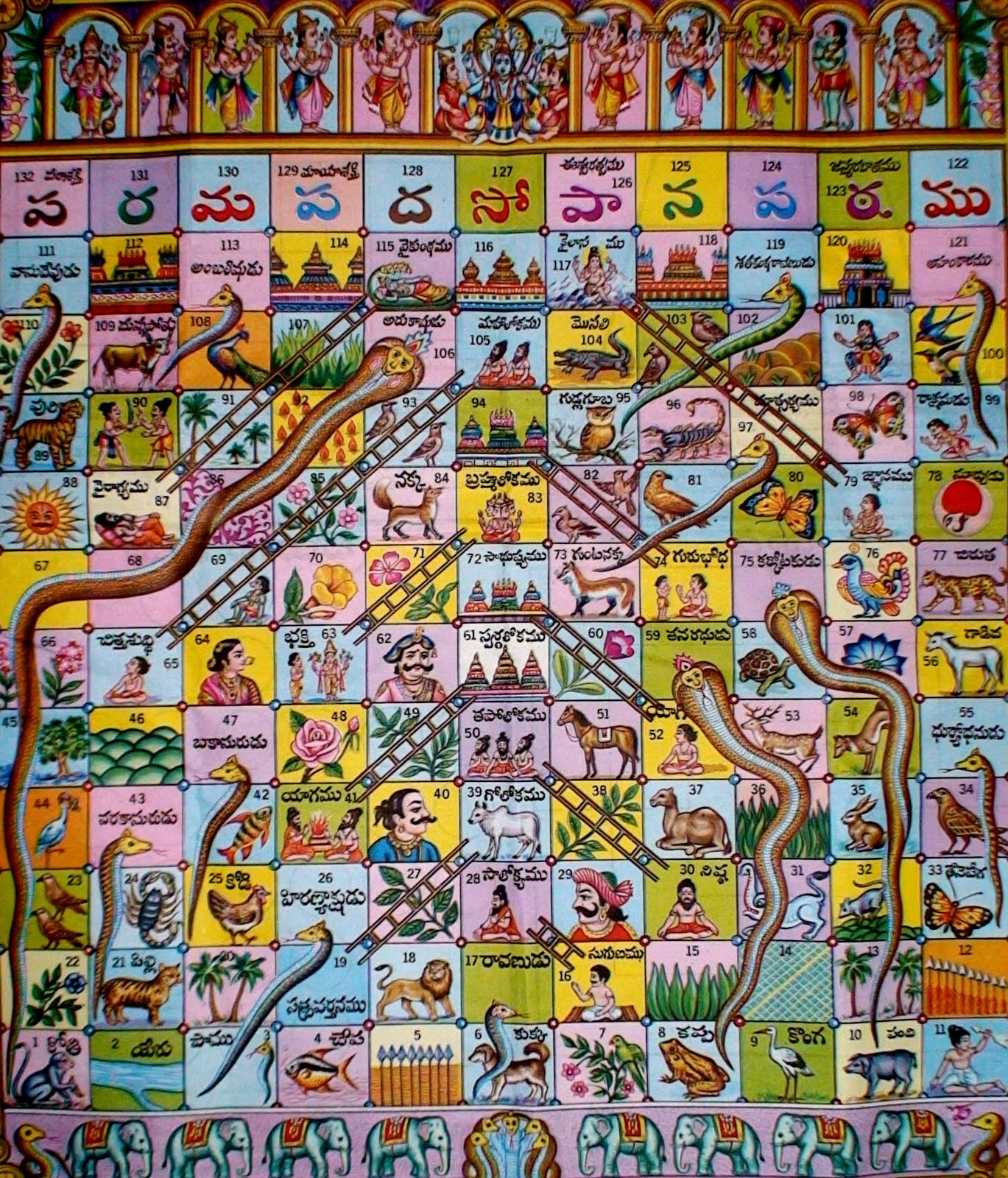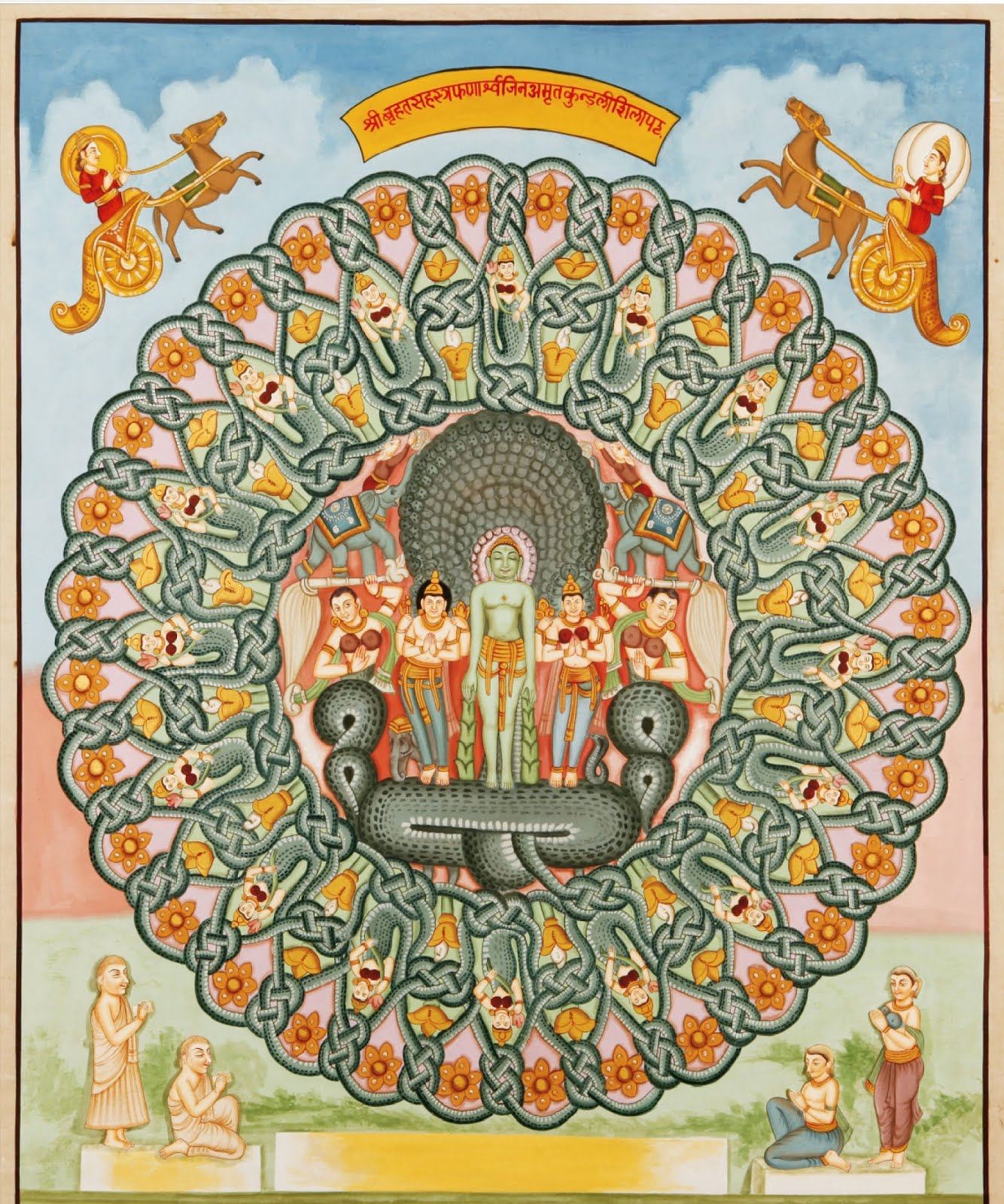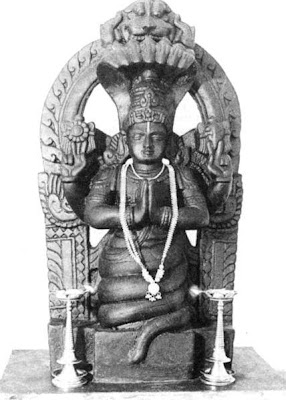Wednesday, December 13, 2017
Thursday, November 2, 2017
Monday, August 21, 2017
Panchavarna
Nagaraja, the serpent king was carrying the images of five different Lingams, which all got merged into one as the presiding deity at this temple. The temple is believed to have been worshipped by Garuda, sage Kathiru and wife of sage Kashyapa.
https://en.wikipedia.org/wiki/Panchavarnaswamy_Temple
https://www.youtube.com/results?search_query=Panchavarna+Swamy
https://en.wikipedia.org/wiki/Panchavarnaswamy_Temple
https://www.youtube.com/results?search_query=Panchavarna+Swamy
Monday, August 7, 2017
Thursday, July 20, 2017
Dead Alive
Miscreant serpents were rattled that due to their mischief the entire Naga Race faced the huge
problem of destruction and by utilising the Mantra Shakti of the Naga experts revived the lives of the
dead Brahmana Vidyarthis thus putting a lid on the controversial storm.
http://hindupad.com/tag/marut-chakravarti/
http://hindupad.com/tag/marut-chakravarti/
Sunday, June 25, 2017
Friday, June 2, 2017
Wednesday, May 24, 2017
Thursday, April 13, 2017
Friday, March 24, 2017
Maha Pradosham
Maha Pradosh <=> Maha Shiva Ratri
ORG
About
All
Tube
Comments / Greetings
guṇa-mayyā sva-śaktyāsya
sarga-sthity-apyayān vibho
dhatse yadā sva-dṛg bhūman
brahma-viṣṇu-śivābhidhām
SYNONYMS
guṇa-mayyā—acting in three modes of activity; sva-śaktyā—by the external energy of Your Lordship; asya—of this material world; sarga-sthiti-apyayān—creation, maintenance and annihilation; vibho—O lord; dhatse—you execute; yadā—when; sva-dṛk—you manifest yourself;bhūman—O great one; brahma-viṣṇu-śiva-abhidhām—as Lord Brahmā, Lord Viṣṇu or Lord Śiva.
TRANSLATION
O lord, you are self-effulgent and supreme. You create this material world by your personal energy, and you assume the names Brahmā, Viṣṇu and Maheśvara when you act in creation, maintenance and annihilation.
http://pallikondeswarar.com/about.html
https://www.youtube.com/results?q=Surutapalli
http://wikimapia.org/300269/Suruttapalli
The legend about the Pallikondeeswar is that during the churning of the milky ocean several valuable items came out. The
- Kamadhenu and
- Kalpa Vruksha found on either sides of the Maragathambigai in the shrine also came from the churning of the ocean.
Mahapradosham - Shiva in a reclining pose on Durga - Mahapradosham
ABOUT 56 KM from Chennai, on the Tamil Nadu-Andhra Pradesh border, is a small village called Surutapalli, which houses the only "Sayana Sivan" (sleeping Shiva) called Pallikondeswarar. The temple has an interesting history which is as follows:
Once Indra lost his kingdom and found that only if he consumed the Divine Nectar he could rule. So there was a tug of war between the devas and asuras to obtain this nectar. The Devas and Asuras got together to churn the ocean, using Mandramalai & Vaasuki, the snake. As they continued to churn the ocean, Vaasuki the snake began to tire and started spewing its poison. Siva came and consumed all the poison. Thus Siva became blue up to his throat and is also known by the name "Neelakandan" ( neela-blue colour, kandam-throat).
Goddess Parvati rushed and held his neck so that the poison would not spread to the whole of his body. Shiva then became drowsy and selected a village called Surutapalli (near Chennai), where he is seen sleeping on the lap of Parvathi. This is the only temple that houses Lord Shiva in a sleeping position.
Narada, meanwhile, passed on the message and down came the
- Devas,
- Brahma,
- Vishnu and the
- Saptarishis,
It is believed that all the Devas & Gods are assembled in the Shiva temples during Pradosham time. Further, the first pradosham was on a Saturday & hence "Sani Pradosham" is even more auspicious.
Duration
The poison was taken by Lord Siva on the dasami day (10th day of the Lunar month). Due to the effect of the poison he swooned in this place and goddess Parvathy (as the Sarva Mangalambigai) sat here and kept the head of the lord on her lap during his rest. This is the reason attributed to the peculiar pose of Lord Siva in reclining state with the head on the lap. The idols of all the gods present here indicate their coming here to inquire about the well being of the lord and to thank his for protecting the universe. The gods and holy persons came here and waited for the lord to recover from the swoon. He recovered on the thrayodasi day (13 the day at the Sayam Sandhya time - 4 to 6 pm) and was pleased with the presence of all gods and holy persons and danced with joy in between the horns of the Nandi. That is the reason for the importance of Pradosha time (dusk of 13th day of Lunar months). The Pradosha of Makara month is the Mahasivarathri day.
Deity / Painting / Entrance

The granite sculpture of the reclining Lord is huge to about 16 feet, as also the image of the seated Parvathi. Sun God and Moon God are present on either side of Goddess Parvathi; Lord Maha Vishnu, Brahma, Lakshmi, Sage Margandeyar, Sage Agasthiar, Sage Valmiki,Indran, Sage Naradhar, Sanagathi Munis, Nandikeshwarar, Lord Subrahmanya with His Consorts, Lord Ganapathy and many devars and rishis are present in the sanctum sanctorum as sculptures. The whole Kailasam has assembled there, a scene which can not be seen in any other temple.
Highlights
- As Per Legend, Pradhosham started here in all temples no pooja will be done and the screen will be closed as the respective gods would have gone to see Shiva’s Dance.
- The only place where Lord Shiva is in the reclining pose.
- Goddess is present with Kamadhenu and Karpaha Viruksham on either side got out of churning the milky ocean
- Kuberans at the entrance instead of Dwarabalahars are also with their consorts Sanganidhi on the left side and with his consort Paduma nidhi on the right.
- Lord Subramanya is facing South (the direction of Lord Yama the god of death). Hence people believe that worshiping Lord Subramanya here removes the fear of death.
The specialty of this temple being that all its deities are present with their consorts. They are:
- Pallikondeeswar with Sarva Mangalambigai,
- Valmikeeswar with Maragathambigai,
- Vinayagar (Gnapathi) with Siddhi and Buddhi,
- Saastha with Poorna and Pushkala,
- Kubera with Sanganidhi and Padmanidhi,
- Dakshinamurthy with Tara,
- Kasi Viswanathar with Visalakshi and
- Subramanya (Karthikeya) with Valli and Devayani.
- Sri Rama is seen with Seeta,
- Vishnu and Mahalakshmi,
- Brahma and Saraswati are others.
 The shrines of Valmikeeswar and Ramalingeswar are opposite to each other and the Lingas of these two shrines face each other. The reason for the twin shrines are said to be for the reason that Valmiky and Sri Ram prayed together at the same time to Lord Siva.
The shrines of Valmikeeswar and Ramalingeswar are opposite to each other and the Lingas of these two shrines face each other. The reason for the twin shrines are said to be for the reason that Valmiky and Sri Ram prayed together at the same time to Lord Siva.
Valmikeeswar shrine
After offering worship to goddess Maragathambigai one has to offer worship at the Valmikeeswar shrine which is to the left of the shrine of the goddess. The idol is in the form of Linga as is the case in most of the Siva temples. But here the Linga is in triangular shape. The deity of this temple is believed to have been installed by the Sage Valmiki to invoke blessings of Lord Siva before his starting to write the great epic Ramayana during the life time of Sri Rama itself. Hence the name. At the Valmikeeswar shrine offer worship to Lord Valmikeeswr. The Valmikeeswar is a Swayamboo (self manifested - came into being on its own) Linga.
Ramalingeswar shrine
Opposite to the Valmikeeswar shrine is the shrine dedicated to Ramalingeswar. The idol here is believed to have been installed by Sri Rama on his return from Lanka after killing Ravana. He wanted to offer prayer to Lord Siva and he installed this Linga and hence the shrine got the name Ramalingeswar shrine. The Valmikeeswar and the Ramalingeswar are face to face to each other. This is a specialty in this temple that the idols of Lord Siva face each other whereas in most of other Siva temples there will be a Nandi facing the lord in front of Siva Linga. In the sanctum on one side Sri Ram and Seeta Devi and on the other side idols of Bharatha and Satrugna are found. There is an idol of Anjaneya (Hanuman) facing Bharatha and Satrugna which is another specialty as Hanuman (Anjaneya) will always be looking at and praying to Sri Rama and Seeta Devi. The Hanuman's posture may be in appreciation/admiration for what Bharath & Satrugn (brothers of Sri Rama) have done for his master (Hanuman's master Sri Rama) and consort even though they were in a most advantageous position to enjoy the wealth and power for themselves.
The stone with the foot printings of Lava-Kusha.
In front of the Valmikeeswar shrine at the left side there is a stone which has imprints of footprints of kids. It is believed to be that of the twin sons of Sri Rama and Seeta Devi, the Lava and Kusha.This stone was lying buried in the temple premises without anybody knowing about it.
When Kanchi Mahaperiyavar camped here for 40 days in 1976, he showed a particular place and asked people to dig it. When they did, they found stone with footprints and Mahaperiyavar disclosed that the footprints are those of Rama’s twins – Lava and Kucha.
just outside Ramalingeshwarar Inside the sanctum of Ramalingeshwar is Rama, Lakshmana, Bharata, Shatrughna and Anjaneya.Valmikeeswarar lingam in an unusual triangular shape.Legend says this place was Valmiki's ashram where Seetha and Lava Kusha came to live after separation from Rama.
Lava and Kusha, who unknowingly fought with their father Lord Rama, over Aswamedhayana horse, came to this temple along with Sage Valmiki, to worship Lord Siva and to get rid off their sin.
Dampathi (Gowri) sametha Dakshinamurthy.
http://www.hindu.com/thehindu/fr/2003/02/28/stories/2003022801290600.htm
Visit
Lava and Kusha, who unknowingly fought with their father Lord Rama, over Aswamedhayana horse, came to this temple along with Sage Valmiki, to worship Lord Siva and to get rid off their sin.
Dampathi (Gowri) sametha Dakshinamurthy.
http://www.hindu.com/thehindu/fr/2003/02/28/stories/2003022801290600.htm
Apart from here he is seen with his consort as ‘Sakthi Dakshinamoorthy’ in Thirukallil.
Unique Prasadam
Here Viboothi (holy ash) is not given as prasadam like the other Shiva temples, instead holy water is given as prasadam and blessing is done with Chadari like a Vaishnavite temple.
Route
- The route is Chennai -> Redhills -> Periyapalayam -> Uthookottai -> Surutapalli.
- The route is Tirupathi -> Puoor -> Nahalapuram -> Surutapalli.
http://shanthiraju.wordpress.com/2007/11/29/visit-to-suruttapalli/
Foot Steps of Lava Kusha
Subscribe to:
Posts (Atom)
Blog Archive
Ladder

Ladder













